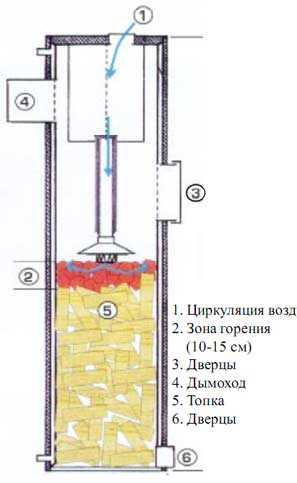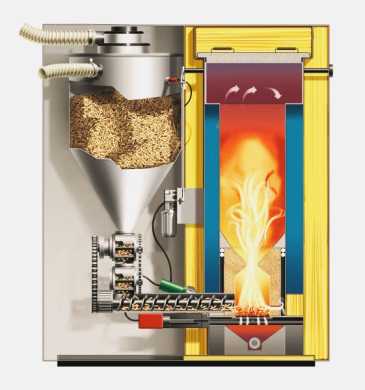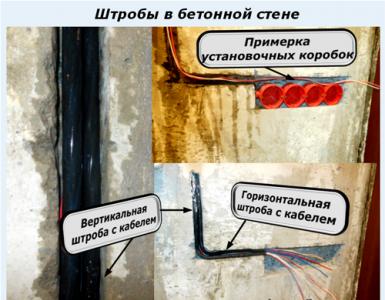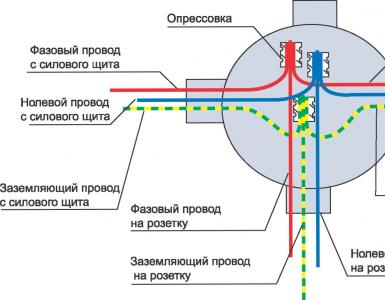How to choose the best solid fuel boiler?
Despite the fact that gas heating is more cost-effective today, in some cases a solid fuel boiler or an electric heater is used to heat industrial buildings, private residential buildings.
The type of heater, a clear understanding of the technological needs for heating equipment, will help you decide which one is suitable for a given situation. The option with electricity is expensive, impractical in terms of economic parameters when heating large areas is required. Let's focus on solid fuel boilers. Firewood, coal, woodworking waste, everything that has constant access to it, can go into the furnace of solid fuel boilers. The better to heat a solid fuel boiler, you decide. The possibilities of supplying fuel to the heating system are purely individual. We will deal with the situation when it comes to solid fuel boilers, what type, what model of equipment to give preference to.
Which boiler is better - evaluation criteria
Which boiler is better or worse, it will become clear already during the operation of the heating equipment. The only way to avoid further disappointment, to eliminate additional costs, is to correctly assess the existing options for independent heating on solid fuels. What are the evaluation criteria: better or worse for solid fuel units?

For heating technology, the following criteria are important:
- power of the proposed models of solid fuel boilers;
- availability of fuel, its cost;
- technological parameters of heating boilers;
- safety of heating equipment;
- equipment with automatic control systems;
- the possibility of switching to gas heating.
Requirements for the desired power, types of fuel determine the technological parameters of the units. These include dimensions, number of combustion chambers, principle of operation, method of loading fuel.
Performance, performance, safety are also key aspects, relying on which you can say for sure - this heating boiler is better than other models.
How to calculate the optimal power parameters
As in the situation with gas boilers, the method for calculating the power of solid fuel boilers is carried out according to the same principle - 1 kW is required to heat 10 m 2 of the indoor area. The height of the ceilings is also taken based on the average value - 3 m.
Eg: for heating a residential building or a small industrial building with an area of 150 m 2, a solid fuel boiler with a capacity of 15 kW is required. Why? 150 / 10 = 15.
Sometimes taking into account the internal volume of the room. Here it is already necessary to take into account such a factor as the thermal insulation of the room. To calculate a well-insulated and insulated room, a coefficient of 40 is taken. An insufficiently insulated building corresponds to a coefficient of 60. For a building with an area of 150 m 2 with a ceiling height of 2.5 m, we make calculations
Eg:
150 x 2.5 x 40 \u003d 15000W (15 kW) - equipment power that is optimal for heating a building with good thermal insulation.
150 x 2.5 x 60 \u003d 22500W (22.5 kW) - the optimal power of the unit for heating a room with poor thermal insulation.
Important! Up to 50% of the design capacity must be added to the calculated capacity of the equipment used for hot water supply. Indirectly heating water in a boiler or heating a heat exchanger will require significant additional power and more wood or coal.
For residential premises, the issue of providing hot water supply is especially relevant. In this situation, an important question should be resolved, which type is preferable for you and how much it will be required for the normal operation of the individual heating system.
What fuel to use
Today, a variety of types of fuel are used for the operation of solid fuel boilers:
- brown coal;
- coke;
- coal;
- peat;
- firewood, woodworking products.

It is misleading to assume that the power of the heater, regardless of whether it is fired with wood, coal or pellets, will be the same. Each fuel has its own caloric parameters, therefore, in each case, the power of the apparatus and the volume of loading of the combustion chamber may differ.
For reference: less high-calorie fuel can lead to a drop in the power of a solid fuel unit by 20-30% of the design data. An unprepared fuel resource (high humidity) leads to even more noticeable power losses of heating equipment.
In the technical documentation for the heating device, manufacturers usually indicate the recommended type of fuel and alternatives. The main type of combustible material will increase the duration of the boiler equipment without failures. The best combustible material may have little effect if used in this type of equipment as an additional fuel.
For an optimal assessment of the quality of heating equipment, it is necessary not only to take into account the requirements for the power of the heater and the technological parameters of the fuel resource, but also to carefully study the varieties of existing solid fuel heaters.
What types of solid fuel boilers are on the market today
The decision on which solid fuel boiler is better depends on a number of factors that are decisive in each individual case. Depending on the selected fuel, the power of the equipment and the type of heating unit on solid combustible material depend.
Today, solid fuel boilers for heating of the following types are presented on the domestic market:
- traditional (steel or cast iron) heating devices;
- pyrolysis (gas generating) boilers;
- heating solid fuel devices of long burning;
- pellet heating units.
All devices have their own specific advantages and disadvantages, therefore, to evaluate the most appropriate type of equipment, it is necessary to take into account a number of nuances.

With traditional models of solid fuel vehicles, there are no particular difficulties. Devices of this type resemble an oven. And the method of supplying fuel, and the design of the furnace itself, and the device of the chimney, all these elements are similar to the device of a conventional furnace. For such a heating apparatus, coal or wood is usually used. Devices are traditionally produced in two versions - steel and cast iron.
If you want to have a simple and reliable heating device at home, traditional models are just for you. Here you will not find either complex automation or electronic devices, which usually affect the cost of heating equipment and often cause heating equipment to fail. Heating appliances of the traditional type are equipped with a mechanical heating temperature controller. The whole system is designed for long and trouble-free operation.
Which boiler is better if you have a limited amount of fuel, but it is desirable to have powerful equipment with high efficiency. The answer is simple, get a pyrolysis type apparatus. Using a similar heater, with the same volume of combustible material as for traditional units, you can get a significant increase in thermal energy.

In pyrolysis boilers, the whole process is divided into three phases: fuel drying, synthesis of combustible materials into a gaseous state, combustion of a gaseous substance. Fuel is 85% synthesized, giving an air-gas combustible mixture. The result of combustion is a huge amount of thermal energy. The operation of the fan provides a constant supply of fresh air, thereby regulating the direction of the flame. Moreover, pyrolysis-type devices are equipped with a secondary, heated air supply system, which increases the intensity of combustion.
A good heater that will be fired with wood or coal is a long-burning boiler. The main difference between this heating equipment and other designs is that these models are not whimsical in maintenance. The high efficiency of this equipment is achieved due to a fundamentally different way of burning combustible material. The combustion chamber is devoid of an open flame, the thermal effect is achieved due to the smoldering of the fuel layer.
The figure shows a diagram of the arrangement of equipment using wood briquettes for long-term burning.

In conclusion, a few words can be said about such a type of heating device as a pellet boiler. Wood pellets are used as fuel. For the category of consumers who live in areas rich in forest resources and have woodworking products constantly at hand, pellet heating units are an ideal option for heating equipment.

Models of this type are equipped with a mechanism for automatically supplying combustible material to the combustion chamber, making them competitive products.
Usable volume of the loading chamber and boiler power
What you need to pay attention to when evaluating a solid fuel boiler for heating a house is what is the ratio of the useful volume of the loading chamber and power for the units. For different heating devices, this ratio varies. The best solid fuel boilers have the optimal ratio in this case. The higher the number, the better for you.
On a note: usable volume is the amount of fuel that can be put into the combustion chamber at one time for the operation of the heating unit. The maximum values of useful volume are models of fuel apparatuses with top loading. Such devices, with front loading, also have high useful volume values. However, loading the combustion chamber with combustible material of such a device will require more time and effort.
For traditional models of solid fuel equipment, the table gives an idea of the ratio of usable volume to power
With pyrolysis units, the situation looks different: one refueling is enough to get heat in 6-10 hours of burning. The efficiency of the heating device is 90%. The main and distinctive feature of this type of mechanism is two combustion chambers. The loading chamber has a large size and volume, when compared with the furnace of traditional types of devices.
The first chamber is used for primary combustion. It is here that due to the lack of oxygen, pyrolysis occurs - a process that generates combustible material into a gaseous state. In the second chamber, the afterburning of the synthesized gaseous fuel is already taking place. This technique is designed to be used for kindling hardwood. The table shows the data of pyrolysis apparatuses.
The next type is pellet solid fuel heaters. Here, fuel is loaded mechanically. The burning time directly depends on the volume of the loading chamber. Some models are equipped with pneumatic fuel supply devices. The ratio for boilers of this type is shown in the table below.
A separate place in this list is occupied by long-burning heating devices. The burning time in the combustion chamber from one load in such units is significant, reaching 12 hours, 24 or 48 hours. The peculiarity of the equipment is that combustion in the combustion chamber does not occur from the bottom up, but, on the contrary, from top to bottom. As a result, firewood, coke or coal smolder. The parameters of the ratio of usable volume to power for devices of this type are given in the table
Conclusion
To determine the best model of a long-burning solid fuel boiler means to radically solve the issue of organizing autonomous heating of industrial buildings and residential buildings. Although each situation requires an individual approach to assessing the capabilities of the heating unit. The very best heating devices can perform horribly when supplied with fuel that does not match the technological data of the equipment. Conversely, simple models can be effective and reliable.
How well the unit will work, time will tell. Only a competent design and thermal calculations can guarantee the satisfactory operation of any heating equipment.













